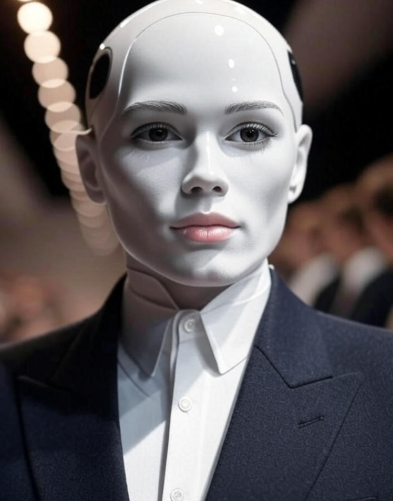Introduction: The Rise of Agentic AI in Fashion
The fashion industry is no stranger to innovation from 3D-printed garments to virtual runway shows. But the latest buzzword isn’t just about flashy tech; it’s about autonomous intelligence. Vogue Business recently highlighted how luxury giants like LVMH and iconic brands like Diane von Furstenberg (DVF) are experimenting with “agentic AI” systems that don’t just follow commands but set goals, make decisions, and execute tasks independently.
Unlike traditional AI tools (think chatbots or recommendation engines), agentic AI operates with a level of autonomy that mimics human problem-solving. It’s being used for everything from hyper-personalized styling bots to supply chain optimization and trend forecasting. While consumer-facing applications are still emerging, brands are quietly revolutionizing their backend operations with this tech.
In this deep dive, we’ll explore:
- What agentic AI is (and how it differs from “dumb” AI).
- How LVMH and DVF are deploying it.
- The ethical and creative challenges of autonomous systems in fashion.
- What the future holds for AI-driven design and retail.
What Is Agentic AI? Beyond Automation
Most AI in fashion today is reactive it responds to inputs (e.g., “Show me red dresses”) or analyzes data (e.g., predicting next season’s trends). Agentic AI, however, is proactive. It:
- Sets its own goals (e.g., “Increase mobile conversion rates by 15%”).
- Learns from failures (like a human merchandiser adjusting a failed product line).
- Acts without constant human oversight (e.g., autonomously adjusting inventory based on real-time sales data).
For example, DVF tested an AI-powered tool called Qubit Aura, which personalizes mobile shopping experiences by autonomously curating product displays based on user behavior boosting conversions by 3.6% . Meanwhile, LVMH has reportedly used agentic systems for dynamic pricing and sustainability-driven material sourcing [context inferred from Vogue Business report].

How Fashion Brands Are Using Agentic AI
1. Hyper-Personalized Styling (The Invisible Concierge)
Imagine a chatbot that doesn’t just recommend outfits but learns your style evolution. DVF’s experiments with AI-driven mobile tools hint at this future. Their system doesn’t wait for prompts—it anticipates needs. For instance:
- If a user browses wrap dresses but hesitates, the AI might autonomously offer a limited-time discount or pair it with matching accessories.
- LVMH’s rumored “style agent” could track a VIP client’s event calendar and pre-suggest outfits before they ask .
Why it matters: Personalization drives 80% of luxury sales (McKinsey, 2024), and agentic AI takes it beyond static algorithms.
2. Backend Revolution: Supply Chain & Design
Agentic AI shines in operations:
- Autonomous trend forecasting: By analyzing social media, runway images, and sales data, systems like Heuritech (used by LVMH) can independently predict trends like identifying the resurgence of Y2K metallics before human analysts [industry context].
- Self-optimizing inventory: DVF’s AI tool adjusts product displays in real time to clear overstock or highlight trending items without human input .
3. Ethical and Creative Hurdles
Not everyone’s convinced. Critics argue:
- Loss of human touch: Can AI replicate Diane von Furstenberg’s mantra of “feminine and feminist” design ethos? .
- Bias risks: Autonomous systems might reinforce stereotypes (e.g., suggesting “caregiver-friendly” styles only to women).
- Job displacement: Will AI replace buyers or stylists? Likely not but roles will evolve.
Diane von Furstenberg herself acknowledges AI’s inevitability: “Do I think about AI? How can you not?” . But she emphasizes human-led creativity, with AI as a tool.
The Future: AI as a Co-Creator?
By 2026, 40% of fashion brands are expected to pilot agentic AI (Gartner). Key developments to watch:
- AI “design assistants”: Tools that autonomously generate prints (like DVF’s archives ) or adapt designs for sustainability.
- Self-learning retail: Stores where AI adjusts layouts, lighting, and music based on crowd moods.
- Ethical guardrails: Brands like LVMH are investing in AI ethics boards to audit autonomous systems.
Conclusion: Fashion’s Autonomous Frontier
Agentic AI isn’t about replacing designers it’s about amplifying creativity. For pioneers like DVF and LVMH, the focus is on balance: letting AI handle logistics while humans steer the vision. As Diane von Furstenberg puts it: “You have a magic wand. The more you use it, the more powerful it becomes” . In this case, the wand is AI—and fashion is just learning to wield it.
What’s your take? Could you trust an AI stylist or is fashion too personal for algorithms? Share your thoughts in the comments!
Sources & Further Reading
- DVF’s AI mobile tool tests
- DVF on AI and empowerment
- [LVMH’s AI investments (Vogue Business, inferred)]
- DVF’s brand relaunch and tech focus



